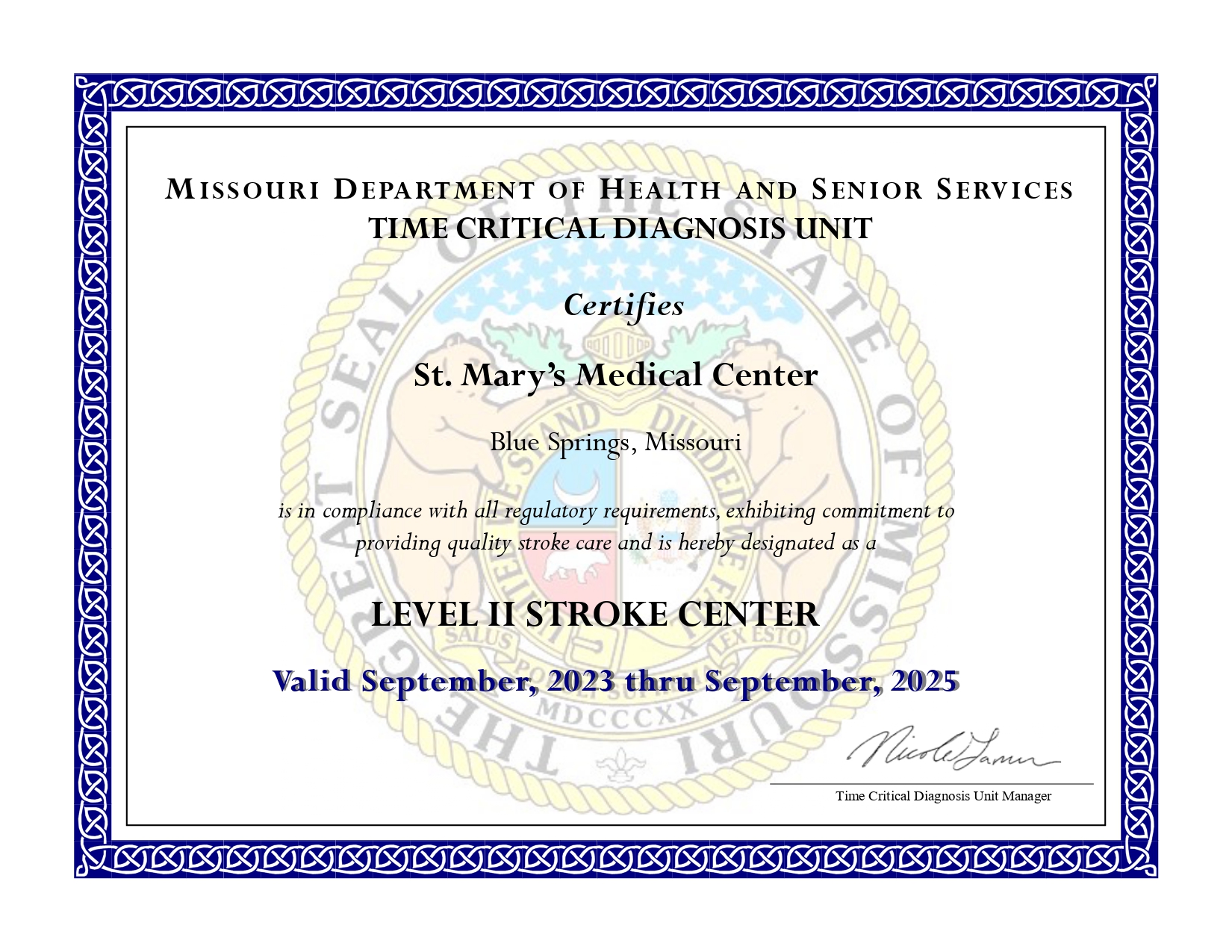Emergency Room Wait Time 0 Minutes
The 24/7 inpatient emergent stroke care we provide, our quick response time and our rehabilitation unit assure that we can meet the needs of the community.
Stroke Center
The Stroke Center at St. Mary’s Medical Center has earned the Gold Seal of Approval from the Joint Commission as an Advanced Primary Stroke Center. It has a lso earned the American Heart Association/American Stroke Association’s Get With The Guidelines®-Stroke Gold Plus Quality Achievement Award with Target: Stroke Honor Roll Elite. The award recognizes the hospital’s commitment to providing the most appropriate stroke treatment according to nationally recognized, research-based guidelines based on the latest scientific evidence.
Our team of nurses and physicians are certified by the National Institutes of Health and are specially trained to provide quick diagnoses and treatment for individuals suffering from strokes. Our neurologist, radiologists and Emergency Room physicians all work together to obtain the necessary tests to confirm stroke diagnoses and begin treatment. Some of these procedures include CTs, CTAs and CT perfusion.
For further information, contact us at 816-655-5563
St. Mary’s Medical Center is a Missouri Department of Health And Senior Services
Designated Level II Stroke Center

Time is of the Essence
According to the American Stroke Association, every 45 seconds someone in America has a stroke. About every three minutes someone dies from one. Call 911 if you experience stroke symptoms to begin receiving treatment as soon as possible and to prevent further damage.
Warning signs of a stroke include:
- Sudden numbness or weakness in the face, arm or leg, especially on one side of the body
- Sudden confusion, trouble speaking or trouble understanding
- Sudden trouble seeing in one or both eyes
- Sudden trouble walking, dizziness, loss of balance or loss of coordination
- Sudden, severe headache with no known cause.
Types of Strokes
- Ischemic stroke: The vessel clogs within.
- Hemorrhagic stroke: The vessel ruptures, causing blood to leak into the brain.
Ischemic strokes account for about 83 percent of all stroke cases. The underlying cause for this type of stroke is an obstruction of fatty deposits lining the vessel walls. It is treated by removing the obstruction and restoring blood flow to the brain. Transient ischemic attacks (TIAs) occur when a vessel clogs for a short time and resolves itself. TIAs are often warning signs of an ischemic stroke.
Hemorrhagic strokes account for about 17 percent of stroke cases. These strokes result from weakened vessels that rupture and bleed into the surrounding brain. They are treated by introducing an obstruction to prevent rupture and bleeding.
For additional information about St. Mary’s Stroke Center, call 816-655-5563.
Featured Services
Breast Health

Cardiology
Emergency Services
Orthopedics



